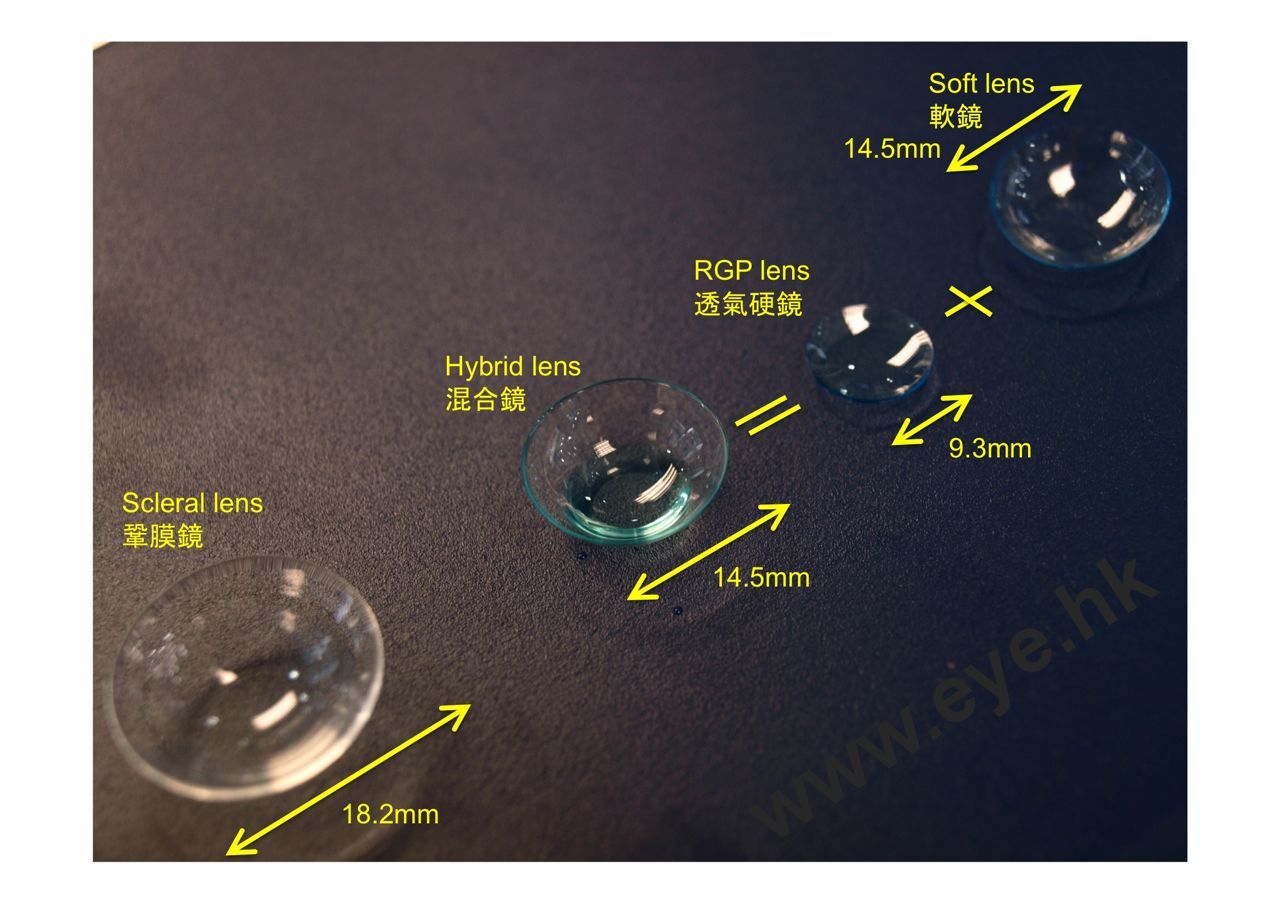Rigid Gas Permeable Lenses

DOUBLE DEALS!
August 30, 2020
Top 5 Mistakes Contact Lens Wearer Often Make!
November 22, 2020Did you know, there are many types of contact lenses out there besides those soft contact lenses which are widely available in the market? Today we will be sharing about Rigid Gas Permeable Lenses, what are their pros and cons and who are the suitable candidates for this type of lens.
What are RGP Lenses?
Rigid Gas Permeable lenses or (RGP) are a type of contact lenses made out of durable plastic that allows oxygen to pass through the material. While the lenses are rigid, they should not be confused with the old and now already obsolete hard lenses which are made out of a type of plastic called polymethyl methacrylate (PMMA). This material was the most widely used material for contact lenses before the birth of soft contact lenses.
PMMA was used to make contact lenses back in the day because of its excellent optical properties, lightweight and shatter resistance compared to the glass alternative which was used before PMMA was introduced. Yes, you read it right, back in the day, contact lenses were made out of glass, and they literally put a real piece of glass on the eye as a form of vision correction.
While PMMA was considered a good alternative as compared to glass as a material for contact lenses, it’s disadvantages are that the material is impermeable to oxygen. Thus, the only way for the cornea to receive oxygen supply while wearing PMMA lenses is by tear exchange that happens with each blink. But for that to happen, the size of the lenses must be small enough and have enough gap between the lens and the cornea.

These characteristics can cause discomfort when wearing them. Also, being small in size could cause problems such as lens dropping out, especially when doing rigorous sports.
So what’s the difference between RGP lenses with the old PMMA lenses? RGP lenses usually include silicone, which makes them more flexible and at the same time allowing oxygen to pass directly through the lens material without just depending on the tear exchange method. This superior material is healthier for the cornea, as it receives sufficient oxygen supply via both ways – tear exchange & directly through the lens.
Most modern RGP allow more oxygen to reach the cornea than most soft contact lenses in the market. Therefore, it’s one of the better choices of lenses for people who wear lenses for an extended period of time.
Because of its better oxygen permeability, RGP can be made larger than PMMA hard lenses, and the edges of the lenses can be made closer to the cornea. These changes help the lenses to sit more stable on the eye and can be worn when during sports or other rigorous activities. It’s also more comfortable and is easier to get used to (better adaptability) as compared to traditional PMMA lenses.
RGP lenses also provide better durability, are less expensive in the long run, have better resistance to deposits as well as provide better visual quality when compared to soft contact lenses.
What are the advantages of RGP Lenses?
- Because lenses are firmer and more rigid, RGP provides a more stable and sharper vision compared to soft contact lenses.
- RGP are more resistant to deposits like protein and lipids because the material they are made of does not contain water. Soft contact lenses, on the other hand, usually are made of hydrogels which majority of its composition is water.
- RGP are more durable, and they do not tear as compared to soft contact lenses. Because of these properties, RGP can last longer with proper care.
- More environmentally friendly than disposable contact lenses.
- Cheaper in the long run since most RGP if taken good care of can last a year or more.
What are the disadvantages of RGP Lenses?
- RGP lenses require an adaptation period (usually around a few days) to achieve maximum comfort. You would have to wear it regularly to maintain comfort. If you stop wearing them for a week, you will probably need to wear them for some time for it to become comfortable again.
- While bigger than the old PMMA hard lenses, it is still smaller compared to soft contact lenses, it may still dislodge from the eyes during very rigorous sports.
- Because RGP lenses are used for a year or longer, better lens care is required as compared to monthly or disposable soft contact lenses.
- While it is more resistant to tear, because of it’s rigid nature, if you step on the lens, it might crack. However, newer lenses such as the SEED AS LUNA RGP lenses are very flexible and are very crack resistant.
Who are suitable candidates for RGP Lenses?
- People who want to achieve the sharpest vision possible.
- People who have high astigmatism prescriptions whose soft contact lenses are not able to provide the desired visual acuity.
- People who have very steep cornea or keratoconus.
- People who need contact lenses after refractive surgery.
- People who wear contact lenses for very long periods of time.
- People who want a healthier option for their cornea.
What are the alternatives for RGP lenses?
For people who want the sharpness of vision of an RGP lens but want the comfort that is similar to a soft contact lens, hybrid contact lenses are a great choice. Hybrid lenses marry both the benefits of RGP as well as soft contact lenses by incorporating a central optical zone that is made of RGP material and a peripheral fitting zone or skirting made of silicone hydrogel lens material.

By doing this, wearers can experience sharp vision while enjoying the comfort of a soft contact lens. Many consider this type of lens as the best of both worlds between the two types of lenses. Since comfort is the main barrier for people to try RGP, hybrid lenses are an excellent alternative to RGP lenses.
Want to know more about RGP or Hybrid Lens?
If you are interested in knowing more about RGP or Hybrid Lenses, or if you have any questions about them, do reach out to us via our social media channels.
Alternatively, if you would like to know if you are a suitable candidate for each of these lenses, you are welcome to schedule an appointment with us via this link: Make an Appointment Here!
Once again, we would like to stress the importance of having a proper lens fitting before getting any contact lenses. Be sure to consult with your optometrist if these types of lenses are the best choice for your lifestyle and visual needs.


